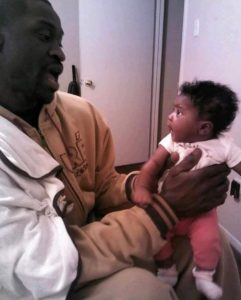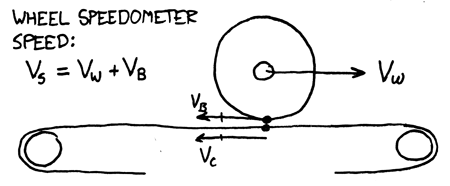from Nashville Presbytery
adopted by the PCA, 30th General Assembly, 2002, 30-53, III, Items 14 – 16, pp. 262 – 270.
“Racial Reconciliation”
Whereas, the Scriptures portray a covenantal pattern of both celebration of our rich heritage and repentance for the sins of our fathers; and,
Whereas, our nation has been blessed even as we have repeatedly addressed iniquity, redressed injustice, and assessed restitution for our inconsistent application of the ideals of truth and freedom; and,
Whereas, the heinous sins attendant with unbiblical forms of servitude-including oppression, racism, exploitation, manstealing, and chattel slavery-remain among the defining features of our national history; and,
Whereas, the issues surrounding that part of our history continue to shape our national life, even creating barriers between brothers and sisters of different races and/or economic spheres from enjoying unencumbered Christian fellowship with one another; and,
Whereas, the aftereffects of that part of our history continue to be felt in the economic, cultural, and social affairs of the communities in which we live and minister;
We therefore confess our covenantal involvement in these national sins. As a people, both we and our fathers have failed to keep the commandments, the statutes, and the laws our God has commanded. We therefore publicly repent of our pride, our complacency, and our complicity. Furthermore, we seek the forgiveness of our brothers and sisters for the reticence of our hearts, which has constrained us from acting swiftly in this matter.
As a people, we pledge to work hard, in a manner consistent with the Gospel imperatives, for the encouragement of racial reconciliation, the establishment of urban and minority congregations, and the enhancement of existing ministries of mercy in our cities, among the poor, and across all social, racial, and economic boundaries, to the glory of God. Amen.
- That Personal Resolution 6 be answered by reference to the Assembly’s action with regard to Overture 20. [See 30-53, III, 14, p. 261.] Adopted.
Whereas, the Presbyterian Church in America was formed to preach and teach the truth of God’s Word with the desire that its members would practice and live by the truth and as we are a young denomination meeting together for our 30`h Annual General Assembly, we want to thank God for the enabling grace to do this as well as we have done it and confess that when and where we have failed it is our fault and because of our sin; and
Whereas, we acknowledge that corporately as a denomination and individually as members of the Presbyterian Church in America we have sinned, (Romans 3:23), and
Whereas, we acknowledge that along with our many other sins, we may have corporately or individually sinned by slighting or offending a brother in Christ, and we as the people of God are called on in Scripture to repent of our sins as God reveals them to us by His Holy Spirit (Rev. 3:19, Acts 16:19-20, Luke 5:32, & II Cor. 7:10); and
Whereas, we recognize that each one of us must repent for our own sins as God holds each of us accountable for them (Ezekiel 18:20, Romans 14:12, Jeremiah 31:2930, Deuteronomy 24:16), and
Whereas, we also recognize that Scripture establishes precedents for the confession of the past sins of others without assessing personal responsibility for those past sins to the confessing party (Neh. 1:5-7, Neh. 9:13, Daniel 9:4-19), and
Whereas, we recognize the dangers of sins of omission as being grave as those of the sins of commission (James 4:17, Psalm 51:16-17, Proverbs 21:3, Luke 12:47), and
Whereas, God’s Word warns strongly against mistreating or not loving a Christian brother (I Corinthians 6:8, I Thessalonians 4:6, James 4:11-12), and
Whereas, we recognize that some have in the past, by commission and/or by omission, offended and slighted their brothers and sisters in Christ (I John 1:8-10), and
Whereas, we desire that all members of the Presbyterian Church in America conduct themselves first as the people of God – without favoritism, prejudice or partiality (Leviticus 19:15 & I Timothy 5:21), and
Whereas, we desire that all members of the Presbyterian Church in America not only show love for their brothers but that they actually have love for their brothers in their hearts (I John 4:21, Hebrews 13:1, Psalm 133:1 & John 13:34-35), and
Whereas, we desire the blessings of God Almighty upon the work of our churches and of our denomination, and fear His withholding those blessings due to a lack of personal repentance for sins committed against our brothers in the Lord (Proverbs 10:22 & Proverbs 24:23-25), and
Whereas, we want as a denomination and as individuals the blessings of being used of God to see souls saved and the work of His kingdom furthered therefore we strive to be obedient to God; and
Whereas, we recognize the need for the work of the kingdom to progress wherever the descendents of Adam are to be found and desire the work of the kingdom to grow as the lost are saved (Matthew 28:18-20 & Acts 1:8),
Therefore, we–the undersigned do humbly ask this 30th General Assembly of the Presbyterian Church in America to resolve,
That, every member, Teaching Elder, and Ruling Elder in the Presbyterian Church in America be urged to examine themselves in the light of Scripture and by the leading of God’s indwelling Holy Spirit to determine if there be any unrepented of and unconfessed sins of partiality, favoritism, or prejudice (Lam. 3:40 & II Cor 13:5), and
That, if any such sins be discovered, either present or past, that these sins be admitted to and forgiveness sought from God and from those brothers so sinned against (Matt 5:23-24), and
That, the Presbyterian Church in America, at the denominational, local church, and personal levels, be encouraged to continue and/or begin to search out the lost wherever they are and lovingly and powerfully proclaim the gospel of Jesus Christ in culturally relevant and meaningful ways as God leads by His Holy Spirit and gives the wisdom to understand (II Tim 4:5 & I Peter 3:15-16), and
That, the Presbyterian Church in America seek to lead the way denominationally in racial reconciliation, regardless of color or ethnic background, for the sake of the Body of Christ and for the glory of God (Col. 3:23-24 & I Cor 10:31-11:1).
—
Commentary available on The Aquila Report.
Full text of all overtures available here.
 I’m pro-life. That’s why I’m grieved that George Floyd’s mother was given an extremely late-term abortion against her will by the Minneapolis Police Department.
I’m pro-life. That’s why I’m grieved that George Floyd’s mother was given an extremely late-term abortion against her will by the Minneapolis Police Department.

















